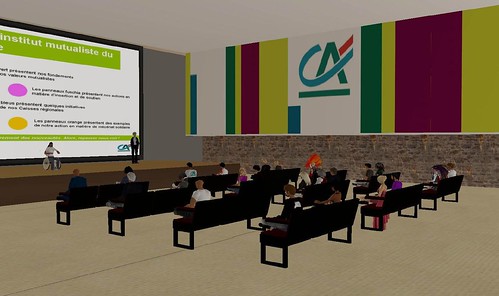The WWF published a report, funded by HP and Microsoft, about the potential climactic benefits of a greater adoption of videoconferencing technologies. One of the items in the report which caught my eye was the stat that:
substituting 5-30% of current air travel by videoconferencing could avoid 5.59-33.53 million tonnes of CO2 emissions annually
The report recommends what it calls ‘digital bridges’ to replace ‘air bridges’ which would otherwise be constructed.
An infrastructure which provided an open access site for every million inhabitants of the world’s urbanised areas would have an estimated $495 million capital cost, and $347 million of annual operating costs (total number of virtual meeting rooms 4620). Much, if not all of which, could be offset by income from those who fly, users of virtual meetings, and other sources. This compares to the estimated $22 billion capital cost of a third Heathrow runway, or the $320 million list price of a new Airbus A380 superjumbo.
Key targets to use the infrastructure would include larger companies with many field activities in different countries; small-medium sized businesses; international Governmental and Non-Governmental organisations; organisers of small-medium sized events; and some distance learning and telemedicine discussions. Countries such as China or India would be especially important, with the aim of many people developing familiarity with videoconferencing before becoming attached to air travel for meetings. ‘Digital bridges’ could therefore supplement, and partially replace, the ‘air bridges’ which would otherwise be constructed.
Personally I don’t think this goes nearly far enough!
I was at a HP briefing last October where HP presented some genuinely impressive internal figures for travel averted using HP’s TelePresence offering (called Halo). I argued at the time (and still believe) that for TelePresence to have a serious impact it needs to be far more ubiquitous – not just (as it currently) islands of hi-def connectivity. HP’s Halo needs to interconnect with Nortel and Cisco’s TelePresence offerrings and vice versa, for a start. I went a step further at the meeting and suggested that for real ubiquity, Halo should be able to interconnect with the likes of Skype video.
HP appear to have been having similar thoughts because they recently announced HP SkyRoom – which, while it doesn’t connect with Skype video afaik, it is a desktop version of TelePresence.
Details are sketchy on SkyRoom as yet, but if we can make hi-def video conferencing and desktop sharing as cheap and easy as making a Skype call, then many of the reasons for having to travel for meetings simply disappear!
Don’t underestimate the benefits of this, not just for companies carbon footprint’s, but also for productivity. I am going to a 3-day conference next month in Orlando, Florida. I am based in Seville, Spain. My travel to and from the conference will take roughly 36 hours – not to mention all the hassles of various airports’ security and then I have to do a week’s work on top of that! For a far more eloquent breakdown of the all of the benefits of TelePresence see Wilson Korol’s excellent post on the Nortel Grassroots blog.
I do believe that desktop hi-def video calls and desktop sharing will become ubiquitous whether enabled by HP or Skype or Apple’s iChat or combinations of clients able to inter-operate seamlessly – there are very few technical barriers to it happening. From there it is a short step to making it a 3-D experience and I will truly be able to say “Beam me up Scotty!” – if you doubt it can be a 3-D experience check out this impressive Cisco video of CEO John Chambers chatting to a full size 3-D Marthin De Beer while Marthin is 14,000 miles away.
[Disclosure: HP and Nortel are GreenMonk clients]
Related articles by Zemanta
- Robin Good’s Best Video Conferencing Tools Mini-Guide (klessblog.blogspot.com)
- Next Generation iPhone May Have Videoconferencing, At Last [IPhone 3G 2.0] (i.gizmodo.com)
- New iPhone 4G Concept Is Son of MacBook Air and iPod Touch [Apple] (i.gizmodo.com)
- Can Videoconferencing Replace Travel? (sciam.com)
- Video calling – today, tomorrow and beyond. (thenextweb.com)
- 4G iPhone Concept, “Say Hello To iChat” (iphonesavior.com)
- Windows Gets Skype Upgrade (gigaom.com)





